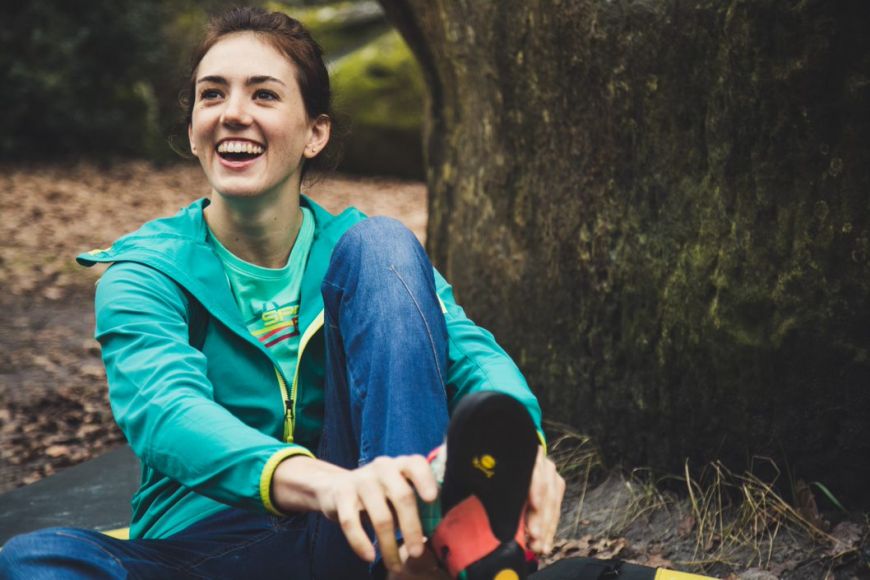
Choosing climbing shoes is no easy task! A lot of variables have to be taken into account, such as the discipline, the size, indoor or outdoor, the level of the climber etc. That's why, in this article, the AlpinStore technical team helps you to choose your future pair of climbing shoes.
The shape of the foot
There are 3 big families of feet.
The Egyptian foot represents about 50% of the population, the Roman foot 27% and the Greek foot 23%.
By looking at your feet, you will know which family you belong to. This information will help you to orient yourself towards the shape of your ideal shoe.
The shape of the shoe
Two types of climbing shoes share the market.
The symmetrical or straight (centered on the second toe). Often intended for beginners who are looking for comfort, and allows the use of all the toes.
The asymmetrical (with the point on the big toe). Often less comfortable and less tolerant than straight shoes. Intended for a public of regular practitioners, they offer a very great precision of support. Versatile and precise, they are suitable for both competitions and training.
From a comfort point of view, a straight shoe will be better suited to a Greek foot, while an asymmetrical shoe will be better suited to the Egyptian and Roman foot.
The arch
It differentiates between booties for beginner climbers and those for experienced climbers. The more pronounced the camber, the more technical the shoe. Indeed, an arched shoe will fit your arch and give you the impression of being one with the shoe.
The shoe size
The first thing to do is to measure your foot, from the heel to the longest t oe (usually the big toe but watch out for Greek feet!).
The second thing to do is to follow this simple rule: choose the smallest size possible before it hurts too much.
A beginner will usually take a shoe that fits his or her size or up to one size larger. No curled toes and so have a comfortable foot ready to endure long hours of climbing. Nor should you take your shoes too big under the pretext of being comfortable.
An experienced climber will opt for one to four sizes below his or her own, depending on the level and the model being tried.
A bootie fits well when it is tight and there is no gap between the foot and the bootie.
Your foot should also be slightly compressed but without any painful pressure points. And that your toes are slightly curled up for more strength.
Note: Not all brands of climbing booties fit the same way!
The heel
The heel of the shoe must be well filled, there must be no gaps. This way, there will be no risk of taking off the shoes.
The practice
The choice of climbing shoes is made according to your practice. Indeed, when you go on long routes where it is difficult to remove the shoes at the belays, it is better to have shoes that are less restrictive for your feet, than in bouldering where you can remove them between two attempts.
That's why regular climbers who do both disciplines have several pairs.
The boulder
This discipline requires intense but relatively short efforts. The shoe must be very precise but also easy and quick to put on and take off . We therefore advise you to choose a shoe that can be tightened either by elastic or velcro.
The cliff
For the cliff, you have to define the type of route and the difficulty in which you are going to climb. In vertical climbing, you will have to give priority to the rigidity of the base of the shoe with a lacing that will go down as low as possible to gain in precision, whereas on slopesyou will need a shoe that facilitates the climbing of holds.
The main routes
For long routes, we are more looking for comfort. You will therefore opt for the same boots as for the cliff, but half a size or one size larger. Unless you want pure performance and buy a pair with one or even two sizes below. In which case, you will remove your slippers at each length to let your aching feet breathe.
The type of tightening
Elastics (or ballerinas) :Elasticated shoes are very flexible and close to the foot . The system of ballerinas is based on compression and an elastic on the instep. It is necessary to take care to anticipate the relaxation of the elastic and to choose them very tight at the purchase.
Velcros : Velcrobooties have an opening on the instep.There can be one, two or three velcros .Easy and quick to put on and take off. They are accurate if the foot fills the general volume of the shoe.
Laces : Often longer to put on and take off, lace-up shoes offer the best fit for your foot, and are often the only alternative for people with thin feet.





Leave a Reply
All fields are required